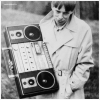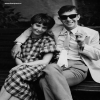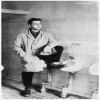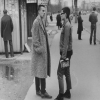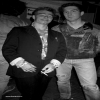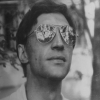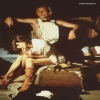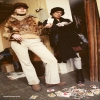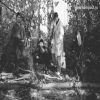
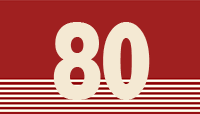
Mods
|
Not less compilated than “new wave” and equally short-lived style of the 80-s as “psycho”. Inspired by the first “new stilyagas” and stimulated by the mod movement of the 60-s, in the USSR it got a reverse vector of development from the soviet punk to the vintage motives of the past. At the same time without losing any of its radicalism, the Soviet “modstyling” of vanguard artistic movements of the 80-s became a hallmark for many members of music and art projects and united miscellaneous art-folk, omnivorous in terms of music and experiencing first-hand all the all the latest things in fashion and music. These characters, derogatory called in art-circles the “mods”, participated in the majority of key shows and performances, carried the latest fashion and culture-related information and often shocked the people with mock nomenclative costumes and punky tricks. Alongside since the 70-s developed a “serious style” of the urban fashionists who preferred the “Italian” (also called “alora”) style, quite popular among spivs and hucksters. In Leningrad the short-term manifestations of mod traditions were present in beatnik circles in the early 80-s and music-related circles at the turn of the 90-s. But all this didn’t lead to forming of any street style, just single characters and very few fancy-dressed gangs paraded the streets. In the process of popularization of “informals” and fusion of the styles by the early 90-s and the heyday on Petrovsky squat and Tishinsky flea-market the members of the soviet “mod movement” came to another revival of vintage style. And while the crimson jackets on the “new Russians” stupefied the visitors of the big-city’s bawdy places, the majority of the “post-Soviet mods” entertained themselves with outfits stored in wardrobes during Perestroika times, matching it with modern fashionable clothes and changing their image for several times a week.  go back to "Street Styles" go back to "Street Styles" |

